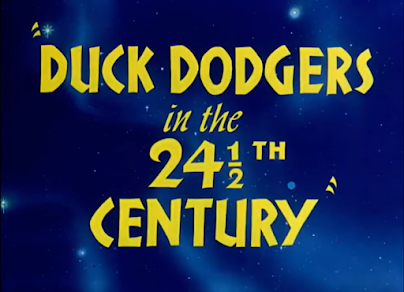Cartoon comedy: "Cellbound"

In Cellbound (MGM, 1955), directors Tex Avery and Michael Lah, and writer/story artist Heck Allen, created a great comic setpiece. An escaped prisoner (that bulldog with the pseudo-Irish accent from a lot of Tex Avery's cartoons) has hidden inside a hollowed-out TV, only to find that it has just been purchased by the prison warden who had been guarding his cell for the past several years. In order to avoid being caught, he has to act out various TV shows convincingly enough that the warden will believe he's watching the real TV shows and won't get suspicious. The comedy comes from his desperation at this challenging task. If he could just do like so many cartoon characters do and produce props and backdrops by reaching off-screen, behind his back or into a pocket that they couldn't possibly fit in... then his task would be easier, and less entertaining for us. Avery and co. make it clear in advance what limited resources the bulldog has. As he escapes...


